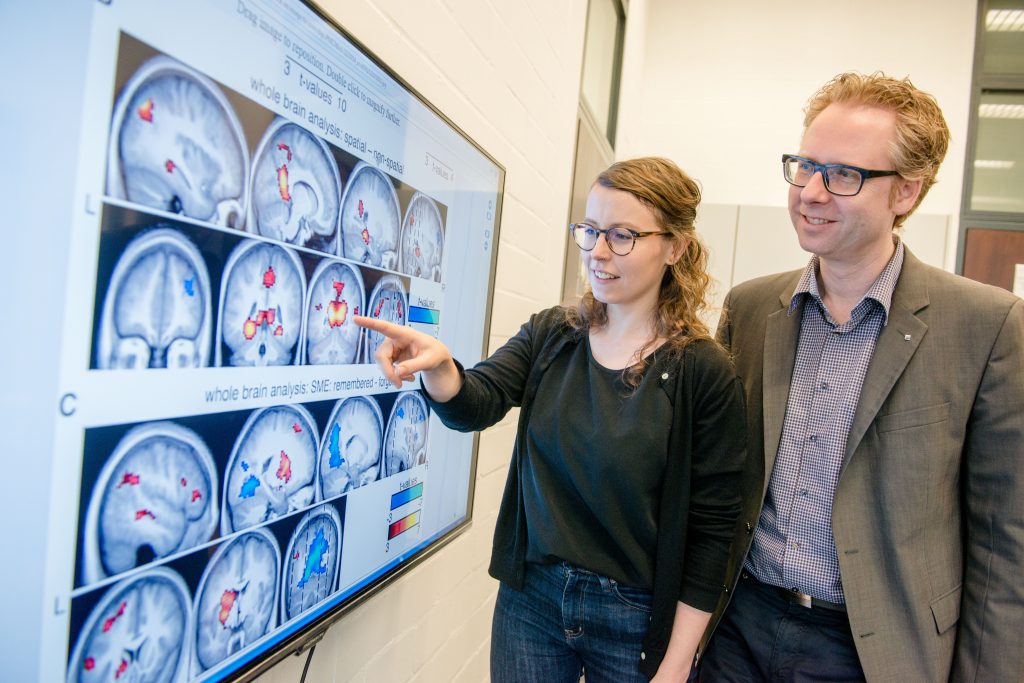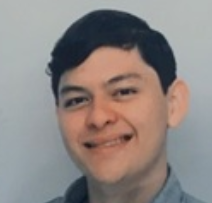
F02 – Focus Group Neuroimaging and Genetics
Nikolai Axmacher, Dagmar Timmann-Braun, Robert Kumsta
In year 1, the Focus Group Neuroimaging staff will analyze selected existing data sets of FOR 1581, including re-analyses of fMRI data using normalization methods optimized for the cerebellum. They will also coordinate, prepare and optimize the acquisition of human neuroimaging data (rsfMRI and DTI). In years 2–4, meta-analytic approaches will be used to analyze the differential relationship between functional and structural connectivity and extinction learning across subprojects. State-of-the-art analysis procedures for structural and functional connectivity analysis as well as optimized normalization protocols of the cerebellum will be made accessible to all neuroimaging subprojects throughout the entire funding period.
Hypothesis of F02:
- Functional and structural connectivity of the extinction network allow predicting inter-individual differences in the efficacy of extinction learning across paradigms.
- Extinction of appetitive and aversive learning relies on partly distinct functional and structural connectivity patterns.
- The cerebellum shows pronounced functional and structural connectivity with other areas of the extinction network. Connectivity patterns of different cerebellar subregions play specific roles for different aspects of extinction.
- Functional and structural connectivity of the extinction network is systematically altered in patients with disturbed extinction.
- Genetic variability predicts inter-individual differences of functional and structural connectivity of
the extinction network.

10 project-relevant publications
Bouyeure A, Pacheco D, Jacob G, Kobelt M, Fellner MC, Rose J, Axmacher N (2025) Distinct representational properties of cues and contexts shape fear learning and extinction. Elife:14:RP105126. https://doi.org/10.7554/eLife.105126
Englert R, Kincses B, Kotikalapudi R, Gallitto G, Li J, Hoffschlag K, Woo C-W, Wager TD, Timmann D, Bingel U, Spisák T (2024) Connectome-Based Attractor Dynamics Underlie Brain Activity in Rest, Task, and Disease. eLife. 13: RP98725. https://doi.org/10.7554/eLife.98725
Ernst TM, Brol AE, Gratz M, Ritter C, Bingel U, Schlamann M, Maderwald S, Quick HH, Merz CJ, Timmann D (2019) The cerebellum is involved in processing of predictions and prediction errors in a fear conditioning paradigm. Elife. 8: e46831. https://doi.org/10.7554/eLife.46831
Genç E, Metzen D, Fraenz C, Schlüter C, Voelkle MC, Arning L, Streit F, Nguyen HP, Güntürkün O, Ocklenburg S, Kumsta R (2023) Structural architecture and brain network efficiency link polygenic scores to intelligence. Hum Brain Mapp. 44(8): 3359-3376. https://doi.org/10.1002/hbm.26286
Kincses B, Forkmann K, Schlitt F, Jan Pawlik R, Schmidt K, Timmann D, Elsenbruch S, Wiech K, Bingel U, Spisák T (2024) An externally validated resting-state brain connectivity signature of pain-related learning. Commun Biol. 7(1): 875. https://doi.org/10.1038/s42003-024-06574-y
Labrenz F, Spisák T, Ernst TM, Gomes CA, Quick HH, Axmacher N, Elsenbruch S, Timmann D (2022) Temporal dynamics of fMRI signal changes during conditioned interoceptive pain-related fear and safety acquisition and extinction. Behav Brain Res. 427: 113868. https://doi.org/10.1016/j.bbr.2022.113868
Nio E, Pais Pereira P, Diekmann N, Petrenko M, Doubliez A, Ernst TM, Batsikadze G, Maderwald S, Deuschl C, Üngör M, Cheng S, Merz CJ, Quick HH, Timmann D (2025) Human cerebellum and ventral tegmental area interact during extinction of learned fear. eLife. 14: RP105399. https://doi.org/10.7554/eLife.105399
Pfaffenrot V, Bouyeure A, Gomes CA, Kashyap S, Axmacher N, Norris DG (2025) Characterizing BOLD activation patterns in the human hippocampus with laminar fMRI. bioRxiv. 2024.07.04.602065 https://doi.org/10.1162/imag_a_00532
Schneider Penate JE, Gomes CA, Spisák T, Genç E, Merz CJ, Wolf OT, Quick HH, Elsenbruch S, Engler H, Fraenz C, Metzen D, Ernst TM, Thieme A, Batsikadze G, Hagedorn B, Timmann D, Güntürkün O, Axmacher N, Kumsta R (2025) Polygenic prediction of fear learning is mediated by brain connectivity. medRxiv 2025.03.12.25323754 https://doi.org/10.1101/2025.03.12.25323754
Spisák T, Bingel U, Wager TD (2023) Multivariate BWAS can be replicable with moderate sample sizes. Nature. 615(7951): E4-7. https://doi.org/10.1038/s41586-023-05745-x





